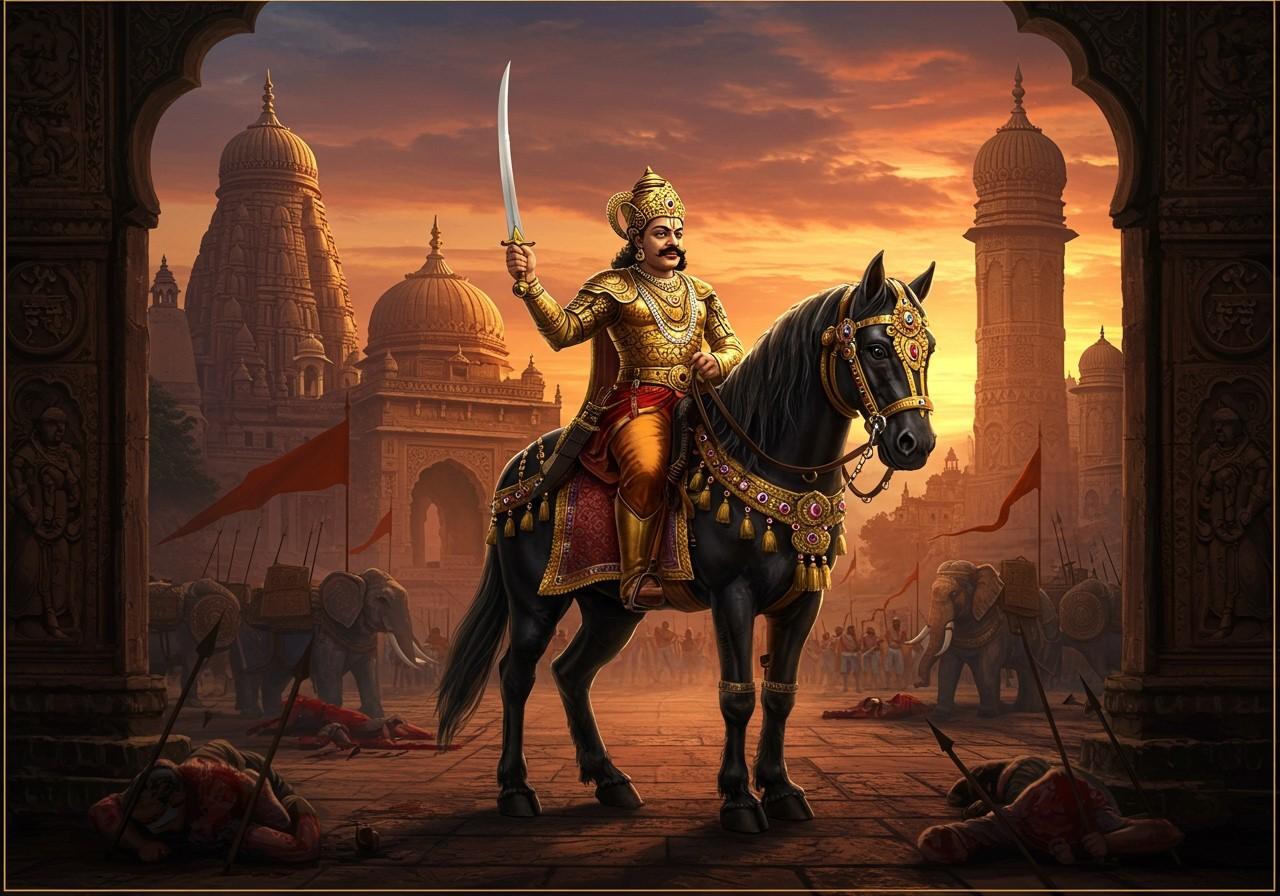
The Rashtrakuta Dynasty, a powerful force in the Indian subcontinent between the 6th and 10th centuries, boasts a rich history filled with influential rulers. While Amoghavarsha I, reigning from 814 to 878 CE, is widely recognized as the greatest Rashtrakuta emperor for his 64-year reign and patronage of arts and literature, King Govinda III also holds a prominent place for his military achievements and expansion of the empire. This exploration delves into Govinda III’s reign, providing insight into his contributions and solidifying his significance in Indian history.
Early Life and Rise to Power
Born into the Rashtrakuta royal family, known for its military strength and cultural achievements, Govinda III received a comprehensive education and rigorous military training. He ascended to the throne amidst a complex political landscape fraught with internal strife and external threats. Following the demise of his predecessor, Dhruva Dharavarsha, Govinda III assumed power through an established succession process.
Military Campaigns and Expansion
Govinda III distinguished himself through exceptional military prowess, leading successful campaigns across the Indian subcontinent. His victories in key battles, such as the Battle of Vengi, and strategic alliances expanded the Rashtrakuta territories significantly. These conquests solidified the dynasty’s dominance, establishing them as a major power in the region.
Administration and Cultural Influence
Beyond military achievements, Govinda III implemented administrative reforms that enhanced governance. A patron of the arts, literature, and architecture, he enriched the cultural landscape of the Rashtrakuta period. Architectural marvels and inscriptions from his era stand as testaments to his contributions. He fostered religious tolerance, promoting Hinduism while respecting other faiths, thereby creating a diverse and inclusive society.
Lasting Legacy and Impact
Govinda III’s legacy resonates through the subsequent history of the Rashtrakuta Dynasty and Indian history as a whole. His reign laid the groundwork for future rulers, establishing policies that contributed to the empire’s stability and prosperity. Historical accounts and inscriptions commemorate his accomplishments, reflecting his enduring influence on Indian history and culture.
Relevance Today
Govinda III’s leadership and governance offer valuable lessons for contemporary leaders and administrators. Studying historical figures like him deepens our understanding of India’s rich cultural heritage. Preservation efforts focused on Rashtrakuta-era monuments and artifacts contribute significantly to India’s cultural tourism and educational initiatives.
Connecting with Heritage through Poojn.in
At Poojn.in, we provide a tangible link to India’s rich past through authentic puja items and cultural goods. As you explore the legacy of figures like Govinda III, consider enhancing your connection to this heritage with these offerings:
- Pure Copper Items: Explore our selection of copper kalash, plates, and other vessels, reminiscent of those used in rituals and ceremonies during the Rashtrakuta period. Copper, revered for its purity and conductivity, adds a traditional touch to your puja practices.
- Traditional Incense: Enhance your spiritual experience with our range of handcrafted dhoop and agarbatti. Made using traditional methods, these incenses create an ambiance of reverence, similar to the atmosphere of ancient rituals.
- Ritual Accessories: Discover a curated collection of puja thalis, diyas, and other accessories, reflecting the ceremonial traditions prevalent during historical periods like the Rashtrakuta era. These items enhance the authenticity and spiritual significance of your puja practices.
Poojn.in ensures the highest standards of quality and authenticity, delivering these items directly to you. Our dedicated customer service team is available to assist with inquiries and guide you in selecting the most appropriate items for your needs.
Visit Poojn.in today to explore our full range of products.
Conclusion
Govinda III’s reign represents a pivotal period in the Rashtrakuta Dynasty’s history. His military successes, administrative reforms, and cultural patronage left an enduring mark on the Indian subcontinent. By studying and preserving his legacy, we gain valuable insights into leadership, governance, and cultural inclusivity, ensuring that future generations appreciate the significant contributions of this remarkable ruler.


